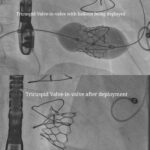Minimally invasive RFA treatment for tumours: a short introduction
Karan is a lively male adult of 20 years. His joie-de-vivre is infectious. People liked his cheerful presence and his nature was to mingle pleasantly with people. In a digital world, Karan is a welcome fresh difference; Karan has always been devoid of toxic addiction to the digital screen. His ability to lead a healthy and fun-filled life, blending digital and non-digital activities in a balanced way, made him a very sought after personality. However, a niggling pain and swelling at the tip of his second toe, the pain particularly increasing at night, was a bothersome thing. After managing the pain with pain killers and other external measures, for some time, Karan had to take the diagnosis from anorthopedician. The doctor’s provisional diagnosis:Karan is probably having a benign tumour called osteoid osteoma.
Cancer: the very word causes panic. This dreaded disease implies significant loss in quality of life in terms of pain, swelling and bleeding. Management of cancer is a major stress on the pocket and time. Occupational work goes into disarray and family budgets are awry due to expensive anticancer treatment. When there is uncontrolled division of cells – abnormal growths occur in tissues and if it is a spreading type, then this is a painful case of cancer. The word tumouroriginating from Latin word tumere, refers to a swelling in tissues. So in cancerous conditions, the word tumour is used to describe the abnormal swelling or abnormal lumps.
Tumours may be malignant (spreading) or benign (non-spreading, localized). Tumour formation occurs due to changes in DNA molecule of concerned cells. These changes in the DNA molecule occurs mainly in portions of the DNA molecule called genes.DNA or deoxy ribose nucleic acid is the macromolecule that contains coded information for cell activity such as production of proteins and other molecules; DNA is also required for cell reproduction (multiplication). Benign tumours are called non-cancerous tumours. Canceroustumours are spreading tumours. The cancerous malignant or spreadingtumours are dangerous as they spread to other organs and tissues. To find out if the tumour is cancerous or non-cancerous, a small portion of the tumour is removed, this procedure is called biopsy. A pathologist analyzes these removed cells under a microscope to determine if the tumour is spreading or non-spreading type.
An example of a benign tumour of the bone is osteoid osteoma. It usually occurs on long bones of the legs. The other area where osteoid osteoma occurs is the bones of hand and spine. Many a times, osteomas disappear on their own and the pain can be managed with pain killer medicines. This non-cancerous tumour occurs in children and young adults. While pain killer medicines help in managing this problem, surgical excision is also done for tumour removal. However, an upcoming approach is providing percutaneous (or across the skin) RFA to destroy the benign tumour.
RFA stands for radio frequency ablation. RF or radio frequency is a type of low radiation energy and does not require any medium to travel; it travels at the speed of light. RF can cause tissues to heat and is even known to increase body temperature. A device called transmitter generates RF waves or radio frequency waves. Besides tissue heating, there is also nerve stimulation activity of RF waves or radio frequency waves.
Incidentally, it is interesting to note that all objects including human bodies emit radiation energy. Human bodies emit electromagnetic radiation (EMR). Radiation is energy that comes out of a body (living or non-living) in the form of waves, rays or particles. Light, sound, heat and x rays are examples of radiation. So the light from a candle, ultraviolet rays from the sun, heat from the stove burner, sound waves from the radio, electromagnetic radiation from the cell phone and microwaves from the microwave oven are all examples of radiation. The different types of radiation include EMR, mechanical radiation, cosmic rays and nuclear radiation. In RFA medical technique, radio waves (a type of electromagnetic radiation) are used for treatment of nerve pain, lesions (particularly internal wounds with inflammation or swelling – like the lesions in the liver), and tumours (particularly benign non-cancerous osteoid osteomas).
In the minimally invasive RFA technique, abnormal tissue is ablated or destroyed by application of heat from radio waves (medium frequency alternating current of 350 to 500 kHz). Targeted destruction of the abnormal tissue is done. RFA procedures are done with image guidance – the image being generated by X ray, ultrasound or CT scan. Once a tumour diagnosis is confirmed, a needle like RFA probe is placed in the tumour.RF waves passing through the probe increases temperature of tumour tissue, and helps destroy it.Many RFA procedures are out patient (OPD).
Thus, RFA is a very useful approach in the therapeutic armamentarium of surgeons. If any situation occurs where you have to discuss tumourremoval with your doctor -request the doctor to look at the possibility of applying minimally invasive RFA treatment to destroy the tumour.
In this case, Karan was lucky, as his surgeon used RFA treatment for the benign osteoid osteomatumour on Karan’s toe, the RFA treatment approach avoided loss of a portion of the toe, which would have happened if surgery was done.


Sunil S Chiplunkar M Pharm MBA PGDHRM
VP – Business Development, Group Pharmaceuticals, Bangalore
E mail: 1969sunilchiplunkar@gmail.com
Ph. 6364578669











